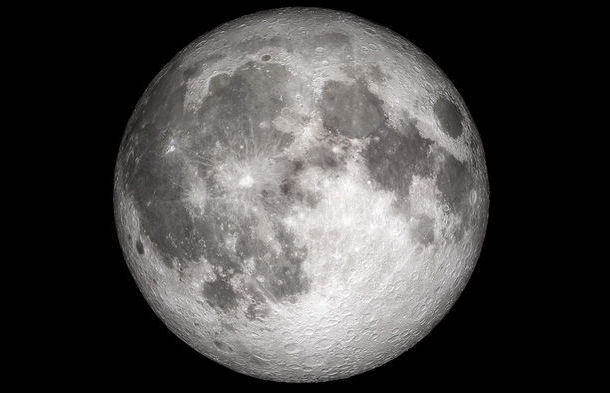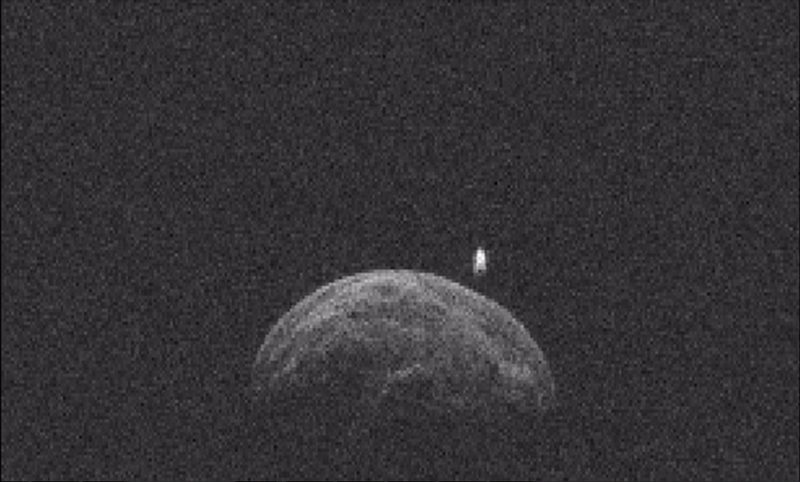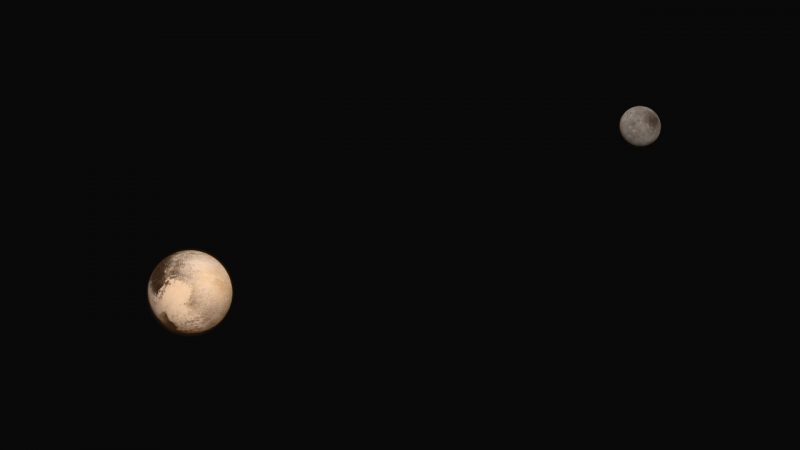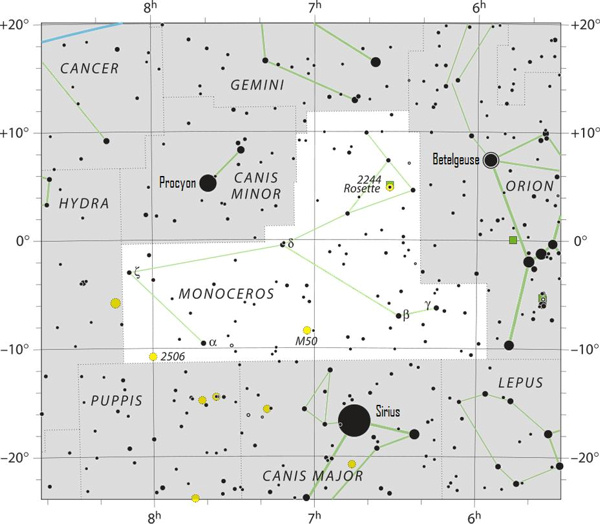Editor's Pick
The way we eat could doom us as a species. Here’s a new diet designed to save us.
The EAT-Lancet Commission’s “planetary health diet” is bold and controversial.

Eating more plant-based burgers could help us avoid environmental catastrophe, according to a new report. Shutterstock
The way we eat and produce food has become so destructive to the environment and our health that it now threatens the long-term survival of the human species, an international commission of 37 scientists write in a sprawling new Lancet report.
We now have so many interconnected food-related crises — climate change, pollution, and food waste, not to mention malnutrition and obesity — that it will be impossible to feed the 10 billion people expected by 2050 unless we make dramatic changes to our diets and farming practices, the researchers argue.
What’s needed, according to the peer-reviewed report, titled “Food in the Anthropocene: The EAT-Lancet Commission on healthy diets from sustainable food systems,” is a new philosophy for how to eat on planet Earth. Though there are huge variations around the world in what and how much we consume, we are all in this existential crisis together.
Which brings us to what seems to be the most controversial aspect of this report: its specific dietary advice for ensuring that everyone’s nutritional needs are met without exceeding “planetary boundaries.” To survive as a species, it says, everyone — including you! — is advised to eat mostly vegetables, grains, legumes, and nuts, and limit red meat consumption to just one serving per week.
The way we eat could doom us as a species. Here’s a new diet designed to save us. by Eliza Barclay, Vox, Jan 24, 2019
Links posted on Facebook
Sun Jan 20, 2019
- Climate Forecast: World Is “Sleepwalking into Catastrophe” by Anne C Mulkern, E&E News/Scientific American, Jan 17, 2019
- Spain brings fresh impetus to climate fight after lost decade by Megan Rowlings, Thomson Reuters Foundation, Jan 16, 2019
- Church of Sol: The Solar Cycle's Potential Impact on Weather and Climate by Bob Henson, Category 6, Weather Underground, Jan 18, 2019
- North American glaciers melting much faster than 10 years ago – study by Emily Holden, Environment, Guardian, Jan 19, 2019
- Climate change: how long do we really have to save the planet from catastrophe? by Michael LePage, New Scientist/Post Magazine, Jan 19, 2019
- Climate Advocates Underestimate Power of Fossil Fueled Misinformation Campaigns, Say Top Researchers by Graham Readfearn, DeSmog, Jan 18, 2019
- Dear Mr. President, that’s not how global warming works by Deanna Paul, Capital Weather Gang, Washington Post, Jan 20, 2019
- Why We Won’t Quit the Climate Fight by Kathleen Dean Moore & Sueellen Campbell, Earth Island Journal, Jan 14, 2019
Mon Jan 21, 2019
- New mobility is coming to a city near you – but will it be sustainable? by Aniruddha Dasgupta (World Resources Institute) & Guangzhe Chen (World Bank), Thomson Reuters Foundation, Jan 16, 2019
- Climate-fuelled flooding is Canada’s costliest and fastest-growing extreme-weather challenge, report says by Jeff Lewis, Globe & Mail, Jan 17, 2019
- How to stop the climate crisis: six lessons from the campaign that saved the ozone by Jonathan Watts, Environment, Guardian, Jan 20, 2019
- Why Climate Change Would Have Alarmed Dr. Martin Luther King by Marshall Shepherd, Science, Forbes, Jan 19, 2019
- Are Antarctica’s Glaciers Collapsing? by Richard B Alley, Scientific American, February Print Issue
- Could a Green New Deal Save Civilization? by Richard Heinberg, Common Dreams, Jan 17, 2019
- Climate Change Is Key Part of Understanding Migration, GAO Tells Trump Administration by Neela Banerjee, InsideClimate News, Jan 19, 2019
- Exxon Reps Pose as Reporters to Query Lawyer Leading Climate Lawsuit Against the Company by Karen Savage, Climate Liability News, Jan 21, 2019
Tue Jan 22, 2019
- Ocean warming speeds vary with depth by Tim Radford, Climate Home, Jan 10, 2019
- How Orkney leads the way for sustainable energy by Robin McKie, Environment, Observer/Guardian, Jan 20, 2019
- Greenland's ice melting faster than scientists previously thought – study by Oliver Milman, Environment, Guardian, Jan 21, 2019
- David Attenborough tells Davos: ‘The Garden of Eden is no more’ by Graeme Wearden, Guardian, Jan 21, 2019
- Trump’s Border Wall Highlights the Climate-Migration Connection by Jean Chemnick, Mark K. Matthews, E&E News/Scientific American, Jan 22, 2019
- Doctors are frightened by climate change. Their industry is a big part of the problem. by Julia Belluz & Umair Irfan, Science & Health, Vox, Jan 19, 2019
- As Americans Increasingly Bear 'Real Costs of Climate Crisis,' Polls Show Soaring Realization of Global Warming's Threat by Jessica Corbett, Common Dreams, Jan 22, 2019
- As Fires Choke Utility, the Question of Who Pays for Warming Emerges by Benjamin Sorrow, E&E News/Scientific American, Jan 21, 2019
Wed Jan 23, 2019
- Antarctic krill: Key food source moves south by Jonathan Amos, Science & Environment, BBC News, Jan 21, 2019
- People with extreme anti-science views know the least, but think they know the most: study by Sharon Kirkey, Edmonton Journal, Jan 15, 2019
- Weatherwatch: climate change cooks up ideal conditions for snow by Kate Ravilious, Guardian, Jan 21, 2019
- The anatomy of climate-change policy: A primer by Amy Harder, The Harder Line, Axios, Jan 22, 2019
- Response to climate change is the true test for global leaders: New Zealand's prime minister by Karen Gilchrist, CNBC, Jan 23, 2019
- Americans Increasingly Say Climate Change Is Happening Now by Marianne Lavelle, InsideClimate News, Jan 23, 2019
- Climate Change Is a Public Health Emergency by Ploy Achakulwisut, Observations, Scientific American, Jan 23, 2019
- The Unprecedented Surge in Fear About Climate Change by Robinson Meyer, Science, The Atlantic, Jan 23, 2019
Thu Jan 24, 2019
- High intensity' heatwave likely as report reveals fire spending gaps by Peter Hannam, Sydney Morning Herald, Jan 24, 2019
- Davos elite looks to ‘Globalisation 4.0’ to stem climate change by Sara Stefanini, Climate Home News, Jan 21, 2019
- Climate change’s impact on soil moisture could push land past ‘tipping point’ by Daisy Dunne, Carbon Brief, Jan 23, 2019
- Winters are warming faster than summers. These US cities could lose weeks of freezing days by 2050. by Umair Irfan & Kavya Sukumar, Science & Health, Vox, Jan 23, 2019
- We Need to Accept We're Likely Underestimating the Climate Crisis by Jack Holmes, Esquire Magazine, Jan 22, 2019
- Why cold weather doesn’t mean climate change is fake by Sarah Gibbens, Environment, National Geographic, Jan 23, 2019
- Carbon tax backers grapple with 'Green New Deal' by Nick Sobczyk, E&E News, Jan 23, 2019
- 2018 was the fourth warmest year on record — and more evidence of a ‘new normal,’ scientist group reports by Chris Mooney, Climate & Environment, Washington Post, Jan 24, 2019
Fri Jan 25, 2019
- Climate Change May Be Creating a Groundwater 'Time Bomb,' Scientists Say by Pam Wright, The Weather Channel, Jan 22, 2019
- Climate Denial Efforts Target Media, Cities Filing Liability Suits by Karen Savage, Climate Liability News, Jan 24, 2019
- Irreverent musings from COP24 by Kevin Andersen, Ecologist, Jan 24, 2019
- 4 Climate-Influenced Disasters Cost the U.S. $53 Billion in 2018 by Daniel Cusick, E&E News/Scientific American, Jan 23, 2019
- On the Water-Starved Colorado River, Drought Is the New Normal by Jim Robbins, Yale Environment 360, Jan 22, 2019
- Ever-Bigger Industrial Agriculture, an Extraction Industry Like Fossil Fuels, Also Drives Climate Change by Georgina Gustin, InsideClimate News, Jan 25, 2019
- Psst ... climate change is still here, even though it's freezing out by fg, MPR (Minnesota Public Radio) News, Jan 24, 2019
- Major Nor'easters Will Still Pound the Eastern Seaboard With Climate Change, Study Says by Pam Wright, The Weather Channel, Jan 23, 2019
Sat Jan 26, 2019
- We can’t save everything from climate change – here’s how to make choices by Benjamin Preston & Johanna Nalau The Conversation US, Jan 23, 2019
- Fire-Induced Storms: A New Danger from the Rise in Wildfires by Ed Struzik, Yale Environment 360, Jan 24, 2019
- Ten Thousand Students March in Berlin as Global #ClimateStrike Movement Rises by John Queally, Common Dreams, Jan 25, 2019
- Teen activist tells Davos elite they're to blame for climate crisis by Ivana Kottasova & Eliza Mackintosh, CNN, Jan 25, 2019
- The way we eat could doom us as a species. Here’s a new diet designed to save us. by Eliza Barclay, Vox, Jan 24, 2019
- The World Just Experienced the Four Hottest Years on Record by Robinson Meyer, Science, The Atlantic, Jan 25, 2019
- ‘Worrying’ rise in global CO2 forecast for 2019 by Damian Carrington, Environment, Jan 24, 2019
- New research, January 14-20, 2019 by Ari Jokimäki, Skeptical Science, Jan 25, 2019
from Skeptical Science http://bit.ly/2HxM4MB
Editor's Pick
The way we eat could doom us as a species. Here’s a new diet designed to save us.
The EAT-Lancet Commission’s “planetary health diet” is bold and controversial.

Eating more plant-based burgers could help us avoid environmental catastrophe, according to a new report. Shutterstock
The way we eat and produce food has become so destructive to the environment and our health that it now threatens the long-term survival of the human species, an international commission of 37 scientists write in a sprawling new Lancet report.
We now have so many interconnected food-related crises — climate change, pollution, and food waste, not to mention malnutrition and obesity — that it will be impossible to feed the 10 billion people expected by 2050 unless we make dramatic changes to our diets and farming practices, the researchers argue.
What’s needed, according to the peer-reviewed report, titled “Food in the Anthropocene: The EAT-Lancet Commission on healthy diets from sustainable food systems,” is a new philosophy for how to eat on planet Earth. Though there are huge variations around the world in what and how much we consume, we are all in this existential crisis together.
Which brings us to what seems to be the most controversial aspect of this report: its specific dietary advice for ensuring that everyone’s nutritional needs are met without exceeding “planetary boundaries.” To survive as a species, it says, everyone — including you! — is advised to eat mostly vegetables, grains, legumes, and nuts, and limit red meat consumption to just one serving per week.
The way we eat could doom us as a species. Here’s a new diet designed to save us. by Eliza Barclay, Vox, Jan 24, 2019
Links posted on Facebook
Sun Jan 20, 2019
- Climate Forecast: World Is “Sleepwalking into Catastrophe” by Anne C Mulkern, E&E News/Scientific American, Jan 17, 2019
- Spain brings fresh impetus to climate fight after lost decade by Megan Rowlings, Thomson Reuters Foundation, Jan 16, 2019
- Church of Sol: The Solar Cycle's Potential Impact on Weather and Climate by Bob Henson, Category 6, Weather Underground, Jan 18, 2019
- North American glaciers melting much faster than 10 years ago – study by Emily Holden, Environment, Guardian, Jan 19, 2019
- Climate change: how long do we really have to save the planet from catastrophe? by Michael LePage, New Scientist/Post Magazine, Jan 19, 2019
- Climate Advocates Underestimate Power of Fossil Fueled Misinformation Campaigns, Say Top Researchers by Graham Readfearn, DeSmog, Jan 18, 2019
- Dear Mr. President, that’s not how global warming works by Deanna Paul, Capital Weather Gang, Washington Post, Jan 20, 2019
- Why We Won’t Quit the Climate Fight by Kathleen Dean Moore & Sueellen Campbell, Earth Island Journal, Jan 14, 2019
Mon Jan 21, 2019
- New mobility is coming to a city near you – but will it be sustainable? by Aniruddha Dasgupta (World Resources Institute) & Guangzhe Chen (World Bank), Thomson Reuters Foundation, Jan 16, 2019
- Climate-fuelled flooding is Canada’s costliest and fastest-growing extreme-weather challenge, report says by Jeff Lewis, Globe & Mail, Jan 17, 2019
- How to stop the climate crisis: six lessons from the campaign that saved the ozone by Jonathan Watts, Environment, Guardian, Jan 20, 2019
- Why Climate Change Would Have Alarmed Dr. Martin Luther King by Marshall Shepherd, Science, Forbes, Jan 19, 2019
- Are Antarctica’s Glaciers Collapsing? by Richard B Alley, Scientific American, February Print Issue
- Could a Green New Deal Save Civilization? by Richard Heinberg, Common Dreams, Jan 17, 2019
- Climate Change Is Key Part of Understanding Migration, GAO Tells Trump Administration by Neela Banerjee, InsideClimate News, Jan 19, 2019
- Exxon Reps Pose as Reporters to Query Lawyer Leading Climate Lawsuit Against the Company by Karen Savage, Climate Liability News, Jan 21, 2019
Tue Jan 22, 2019
- Ocean warming speeds vary with depth by Tim Radford, Climate Home, Jan 10, 2019
- How Orkney leads the way for sustainable energy by Robin McKie, Environment, Observer/Guardian, Jan 20, 2019
- Greenland's ice melting faster than scientists previously thought – study by Oliver Milman, Environment, Guardian, Jan 21, 2019
- David Attenborough tells Davos: ‘The Garden of Eden is no more’ by Graeme Wearden, Guardian, Jan 21, 2019
- Trump’s Border Wall Highlights the Climate-Migration Connection by Jean Chemnick, Mark K. Matthews, E&E News/Scientific American, Jan 22, 2019
- Doctors are frightened by climate change. Their industry is a big part of the problem. by Julia Belluz & Umair Irfan, Science & Health, Vox, Jan 19, 2019
- As Americans Increasingly Bear 'Real Costs of Climate Crisis,' Polls Show Soaring Realization of Global Warming's Threat by Jessica Corbett, Common Dreams, Jan 22, 2019
- As Fires Choke Utility, the Question of Who Pays for Warming Emerges by Benjamin Sorrow, E&E News/Scientific American, Jan 21, 2019
Wed Jan 23, 2019
- Antarctic krill: Key food source moves south by Jonathan Amos, Science & Environment, BBC News, Jan 21, 2019
- People with extreme anti-science views know the least, but think they know the most: study by Sharon Kirkey, Edmonton Journal, Jan 15, 2019
- Weatherwatch: climate change cooks up ideal conditions for snow by Kate Ravilious, Guardian, Jan 21, 2019
- The anatomy of climate-change policy: A primer by Amy Harder, The Harder Line, Axios, Jan 22, 2019
- Response to climate change is the true test for global leaders: New Zealand's prime minister by Karen Gilchrist, CNBC, Jan 23, 2019
- Americans Increasingly Say Climate Change Is Happening Now by Marianne Lavelle, InsideClimate News, Jan 23, 2019
- Climate Change Is a Public Health Emergency by Ploy Achakulwisut, Observations, Scientific American, Jan 23, 2019
- The Unprecedented Surge in Fear About Climate Change by Robinson Meyer, Science, The Atlantic, Jan 23, 2019
Thu Jan 24, 2019
- High intensity' heatwave likely as report reveals fire spending gaps by Peter Hannam, Sydney Morning Herald, Jan 24, 2019
- Davos elite looks to ‘Globalisation 4.0’ to stem climate change by Sara Stefanini, Climate Home News, Jan 21, 2019
- Climate change’s impact on soil moisture could push land past ‘tipping point’ by Daisy Dunne, Carbon Brief, Jan 23, 2019
- Winters are warming faster than summers. These US cities could lose weeks of freezing days by 2050. by Umair Irfan & Kavya Sukumar, Science & Health, Vox, Jan 23, 2019
- We Need to Accept We're Likely Underestimating the Climate Crisis by Jack Holmes, Esquire Magazine, Jan 22, 2019
- Why cold weather doesn’t mean climate change is fake by Sarah Gibbens, Environment, National Geographic, Jan 23, 2019
- Carbon tax backers grapple with 'Green New Deal' by Nick Sobczyk, E&E News, Jan 23, 2019
- 2018 was the fourth warmest year on record — and more evidence of a ‘new normal,’ scientist group reports by Chris Mooney, Climate & Environment, Washington Post, Jan 24, 2019
Fri Jan 25, 2019
- Climate Change May Be Creating a Groundwater 'Time Bomb,' Scientists Say by Pam Wright, The Weather Channel, Jan 22, 2019
- Climate Denial Efforts Target Media, Cities Filing Liability Suits by Karen Savage, Climate Liability News, Jan 24, 2019
- Irreverent musings from COP24 by Kevin Andersen, Ecologist, Jan 24, 2019
- 4 Climate-Influenced Disasters Cost the U.S. $53 Billion in 2018 by Daniel Cusick, E&E News/Scientific American, Jan 23, 2019
- On the Water-Starved Colorado River, Drought Is the New Normal by Jim Robbins, Yale Environment 360, Jan 22, 2019
- Ever-Bigger Industrial Agriculture, an Extraction Industry Like Fossil Fuels, Also Drives Climate Change by Georgina Gustin, InsideClimate News, Jan 25, 2019
- Psst ... climate change is still here, even though it's freezing out by fg, MPR (Minnesota Public Radio) News, Jan 24, 2019
- Major Nor'easters Will Still Pound the Eastern Seaboard With Climate Change, Study Says by Pam Wright, The Weather Channel, Jan 23, 2019
Sat Jan 26, 2019
- We can’t save everything from climate change – here’s how to make choices by Benjamin Preston & Johanna Nalau The Conversation US, Jan 23, 2019
- Fire-Induced Storms: A New Danger from the Rise in Wildfires by Ed Struzik, Yale Environment 360, Jan 24, 2019
- Ten Thousand Students March in Berlin as Global #ClimateStrike Movement Rises by John Queally, Common Dreams, Jan 25, 2019
- Teen activist tells Davos elite they're to blame for climate crisis by Ivana Kottasova & Eliza Mackintosh, CNN, Jan 25, 2019
- The way we eat could doom us as a species. Here’s a new diet designed to save us. by Eliza Barclay, Vox, Jan 24, 2019
- The World Just Experienced the Four Hottest Years on Record by Robinson Meyer, Science, The Atlantic, Jan 25, 2019
- ‘Worrying’ rise in global CO2 forecast for 2019 by Damian Carrington, Environment, Jan 24, 2019
- New research, January 14-20, 2019 by Ari Jokimäki, Skeptical Science, Jan 25, 2019
from Skeptical Science http://bit.ly/2HxM4MB


















